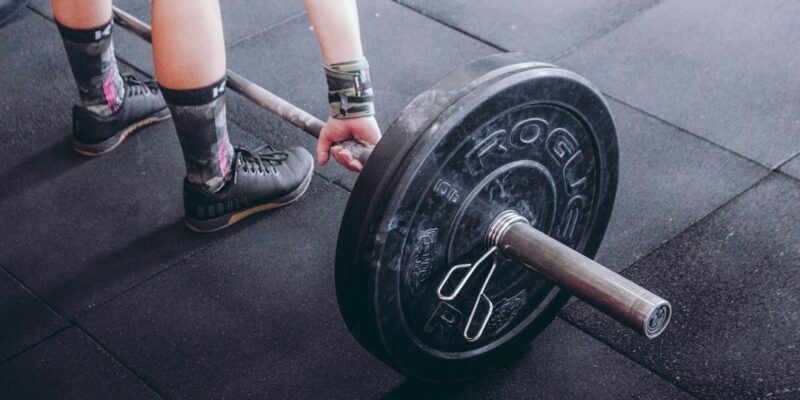
Bodyweight Mastery: Calisthenics Workouts for Ultimate Fitness
Bodyweight mastery and calisthenics are forms of exercise that utilize the resistance of one’s own body weight to build strength, endurance, and flexibility. These types of workouts have been around for centuries and have recently gained popularity due to their effectiveness and convenience.
Calisthenics is a form of exercise that involves using one’s own body weight as resistance to perform various movements and exercises. It focuses on developing strength, flexibility, and coordination through movements such as push-ups, pull-ups, squats, and planks. Bodyweight mastery, on the other hand, takes calisthenics to the next level by incorporating advanced techniques and movements that require a high level of strength and control.
The history of bodyweight training and calisthenics can be traced back to ancient Greece, where it was an integral part of the training regimen for athletes. The Greeks believed that a strong and agile body was essential for success in sports and warfare. Over time, bodyweight training techniques spread to other cultures and became popular among gymnasts, martial artists, and military personnel.
In recent years, bodyweight training and calisthenics have gained popularity among fitness enthusiasts of all levels. This is due to several factors, including the accessibility and convenience of these workouts. Bodyweight exercises can be performed anywhere, without the need for expensive equipment or a gym membership. Additionally, bodyweight training is highly adaptable and can be modified to suit individual fitness levels and goals.
Key Takeaways
- Bodyweight mastery and calisthenics are forms of exercise that use only the weight of the body to build strength and muscle.
- Benefits of bodyweight training and calisthenics workouts include improved flexibility, balance, and coordination, as well as increased muscle mass and overall fitness.
- Essential exercises for bodyweight mastery include push-ups, squats, lunges, and planks, while advanced techniques for calisthenics workouts include handstands, muscle-ups, and planche progressions.
- Designing a bodyweight mastery workout plan involves choosing exercises that target different muscle groups and gradually increasing the difficulty over time.
- Incorporating calisthenics into your fitness routine can be done by adding bodyweight exercises to your existing workout or by following a dedicated calisthenics program.
- Common mistakes to avoid in bodyweight training include improper form, neglecting rest and recovery, and not challenging yourself enough.
- Nutrition and recovery are important for optimal calisthenics performance, with a focus on consuming enough protein and getting enough rest.
- Overcoming plateaus in bodyweight mastery involves changing up your workout routine, increasing the difficulty of exercises, and focusing on proper form and technique.
- Success stories and inspirational examples of bodyweight training can be found in athletes and fitness enthusiasts who have achieved impressive feats of strength and endurance through calisthenics.
Benefits of Bodyweight Training and Calisthenics Workouts
1. Improved strength and endurance: Bodyweight exercises require the use of multiple muscle groups simultaneously, which helps to develop overall strength and endurance. By gradually increasing the difficulty of the exercises, individuals can continue to challenge their muscles and make progress over time.
2. Increased flexibility and mobility: Many bodyweight exercises involve dynamic movements that require a full range of motion. This helps to improve flexibility and mobility in the joints, reducing the risk of injury and improving overall athletic performance.
3. Better body composition and weight management: Bodyweight training and calisthenics workouts are highly effective for burning calories and building lean muscle mass. This can lead to improved body composition, increased metabolism, and better weight management.
4. Reduced risk of injury: Bodyweight exercises are generally low-impact and put less stress on the joints compared to exercises that involve heavy weights or machines. This makes them a safer option for individuals with joint issues or previous injuries.
5. Cost-effective and convenient: One of the biggest advantages of bodyweight training and calisthenics is that they can be done anywhere, at any time, without the need for expensive equipment or a gym membership. This makes them a cost-effective and convenient option for individuals who may not have access to a gym or prefer to workout at home.
Essential Exercises for Bodyweight Mastery
1. Push-ups: Push-ups are a classic bodyweight exercise that targets the chest, shoulders, triceps, and core muscles. They can be modified to suit different fitness levels by adjusting the hand placement or performing them on an incline or decline surface.
2. Pull-ups: Pull-ups are an excellent exercise for developing upper body strength, particularly in the back, shoulders, and arms. They can be challenging for beginners, but with practice, individuals can gradually increase their strength and perform more repetitions.
3. Squats: Squats are a compound exercise that targets the muscles in the lower body, including the quadriceps, hamstrings, glutes, and calves. They can be performed with just body weight or with added resistance using dumbbells or a barbell.
4. Lunges: Lunges are another effective lower body exercise that targets the quadriceps, hamstrings, glutes, and calves. They can be performed in various directions and with different variations to target different muscle groups.
5. Planks: Planks are a core-strengthening exercise that targets the abdominal muscles, lower back, and shoulders. They can be performed in a static position or with dynamic movements to increase the challenge.
6. Dips: Dips are a challenging exercise that targets the triceps, chest, and shoulders. They can be performed using parallel bars or using a bench or chair for support.
7. Burpees: Burpees are a full-body exercise that combines strength training and cardiovascular conditioning. They involve a combination of push-ups, squats, and jumps, making them an effective calorie-burning exercise.
Advanced Techniques for Calisthenics Workouts
| Technique | Description | Benefits |
|---|---|---|
| Handstand Push-ups | Push-ups performed in a handstand position against a wall or freestanding. | Strengthens shoulders, triceps, and core muscles. |
| Muscle-ups | A combination of a pull-up and a dip, where the athlete transitions from below the bar to above the bar. | Develops upper body strength and explosive power. |
| Planche | A static hold where the athlete supports their body weight on their hands while keeping their body parallel to the ground. | Strengthens shoulders, triceps, and core muscles, as well as improves balance and body control. |
| Human Flag | A static hold where the athlete supports their body weight sideways on a vertical pole. | Develops upper body and core strength, as well as improves grip strength and body control. |
| One-arm Push-ups | A push-up performed with one hand on the ground and the other hand behind the back. | Strengthens chest, triceps, and core muscles, as well as improves balance and body control. |
1. Muscle-ups: Muscle-ups are an advanced calisthenics exercise that combines a pull-up with a dip. They require a high level of upper body strength and coordination.
2. Handstand push-ups: Handstand push-ups are a challenging exercise that targets the shoulders, triceps, and upper back. They involve performing a push-up while in a handstand position against a wall or freestanding.
3. Pistol squats: Pistol squats are a single-leg squat variation that requires balance, strength, and flexibility. They target the quadriceps, hamstrings, glutes, and calves.
4. Front and back levers: Front and back levers are advanced gymnastics exercises that require exceptional upper body strength and control. They involve holding the body in a horizontal position while hanging from a bar.
5. Planche: The planche is an advanced calisthenics move that involves balancing the body in a horizontal position with only the hands touching the ground. It requires tremendous upper body strength and core stability.
6. Human flag: The human flag is an impressive calisthenics move that involves holding the body horizontally while gripping a vertical pole. It requires exceptional upper body and core strength.
Designing a Bodyweight Mastery Workout Plan
1. Setting goals: Before starting a bodyweight training program, it’s important to set specific goals that you want to achieve. Whether it’s building strength, improving flexibility, or losing weight, having clear goals will help guide your training and keep you motivated.
2. Choosing exercises: Once you have your goals in mind, choose exercises that target the specific muscle groups or skills you want to develop. Start with the essential exercises mentioned earlier and gradually progress to more advanced movements as you become stronger and more proficient.
3. Determining sets and reps: The number of sets and reps you perform will depend on your fitness level and goals. Beginners may start with 2-3 sets of 8-12 reps for each exercise, while more advanced individuals may perform 3-4 sets of 12-15 reps or more.
4. Creating a schedule: Consistency is key when it comes to bodyweight training. Create a schedule that allows for regular workouts, ideally 3-4 times per week. Be sure to include rest days to allow for recovery and muscle growth.
5. Tracking progress: Keep track of your workouts and progress by recording the number of sets, reps, and any modifications or progressions you make. This will help you stay motivated and see how far you’ve come.
Incorporating Calisthenics into Your Fitness Routine
1. Combining bodyweight training with other forms of exercise: While bodyweight training can be a standalone workout routine, it can also be incorporated into other forms of exercise such as weightlifting, cardio, or yoga. This can help to add variety to your workouts and target different muscle groups.
2. Finding the right balance: It’s important to find the right balance between bodyweight training and other forms of exercise to avoid overtraining or burnout. Listen to your body and adjust your training accordingly.
3. Avoiding overtraining: Overtraining can lead to decreased performance, increased risk of injury, and burnout. Be sure to include rest days in your training schedule and listen to your body’s signals for when it needs a break.
Common Mistakes to Avoid in Bodyweight Training
1. Neglecting proper form: Proper form is crucial in bodyweight training to ensure that you are targeting the correct muscles and minimizing the risk of injury. Take the time to learn and practice proper form for each exercise.
2. Not progressing gradually: Progression is key in bodyweight training. Gradually increase the difficulty of exercises by adding more reps, performing more challenging variations, or increasing the range of motion.
3. Focusing too much on one muscle group: It’s important to have a balanced workout routine that targets all major muscle groups. Neglecting certain muscle groups can lead to muscle imbalances and increased risk of injury.
4. Skipping warm-up and cool-down: Warm-up exercises help to prepare the body for exercise by increasing blood flow and loosening up the muscles. Cool-down exercises help to prevent muscle soreness and promote recovery. Be sure to include both in your workout routine.
Nutrition and Recovery for Optimal Calisthenics Performance
1. Importance of proper nutrition: Proper nutrition is essential for fueling your workouts and promoting muscle growth and recovery. Focus on consuming a balanced diet that includes lean proteins, complex carbohydrates, healthy fats, and plenty of fruits and vegetables.
2. Hydration: Staying hydrated is crucial for optimal performance and recovery. Drink plenty of water throughout the day, especially before, during, and after workouts.
3. Rest and recovery: Rest days are just as important as workout days. Allow your body time to recover and repair by incorporating rest days into your training schedule.
4. Stretching and foam rolling: Stretching and foam rolling can help to improve flexibility, reduce muscle soreness, and prevent injuries. Incorporate stretching exercises and foam rolling into your warm-up and cool-down routines.
Overcoming Plateaus in Bodyweight Mastery
1. Changing up exercises and routines: Plateaus can occur when your body becomes accustomed to a certain exercise or routine. To overcome plateaus, try changing up your exercises, adding new variations, or incorporating different training techniques such as supersets or drop sets.
2. Increasing intensity and volume: To continue making progress, gradually increase the intensity and volume of your workouts. This can be done by adding more reps, sets, or resistance to your exercises.
3. Incorporating new challenges: Challenge yourself by incorporating new exercises or movements that target different muscle groups or skills. This will keep your workouts fresh and prevent boredom.
Success Stories and Inspirational Examples of Bodyweight Training
There are countless success stories of individuals who have achieved impressive results through bodyweight training and calisthenics. These stories serve as inspiration for others who are looking to improve their fitness and achieve their goals.
One example is Al Kavadlo, a renowned calisthenics expert who has built an incredible physique through bodyweight training alone. His dedication and commitment to his craft have inspired many others to take up calisthenics and push their limits.
Another example is Frank Medrano, a vegan bodybuilder who has gained fame for his incredible strength and physique achieved through bodyweight training. His story serves as a testament to the power of bodyweight exercises in building muscle and strength.
In conclusion, bodyweight mastery and calisthenics offer numerous benefits for individuals of all fitness levels. From improved strength and endurance to increased flexibility and mobility, these workouts provide a cost-effective and convenient way to achieve your fitness goals. By incorporating essential exercises and advanced techniques, designing a workout plan, and focusing on proper nutrition and recovery, you can achieve impressive results and overcome plateaus in your bodyweight training journey. So why not give it a try and see what your body is capable of?
FAQs
What are calisthenics workouts?
Calisthenics workouts are exercises that use bodyweight movements to build strength, flexibility, and endurance. These exercises include push-ups, pull-ups, squats, lunges, and other movements that use your own body weight as resistance.
What are the benefits of calisthenics workouts?
Calisthenics workouts can help you build strength, improve flexibility, and increase endurance. They can also help you burn fat and build muscle, and they require no equipment, making them a convenient and cost-effective way to exercise.
What are some examples of calisthenics exercises?
Some examples of calisthenics exercises include push-ups, pull-ups, squats, lunges, planks, and burpees. These exercises can be modified to suit your fitness level and can be done anywhere, making them a great option for people who don’t have access to a gym.
Can calisthenics workouts help me lose weight?
Yes, calisthenics workouts can help you lose weight by burning calories and building muscle. However, it’s important to combine calisthenics workouts with a healthy diet to see the best results.
Do I need any equipment to do calisthenics workouts?
No, you don’t need any equipment to do calisthenics workouts. All you need is your own body weight and some space to move around. However, you can use equipment like resistance bands or a pull-up bar to make the exercises more challenging.
Are calisthenics workouts suitable for beginners?
Yes, calisthenics workouts can be modified to suit any fitness level, making them a great option for beginners. It’s important to start with basic exercises and gradually increase the intensity and difficulty of your workouts as you get stronger.



















Thank you for your sharing. I am worried that I lack creative ideas. It is your article that makes me full of hope. Thank you. But, I have a question, can you help me?